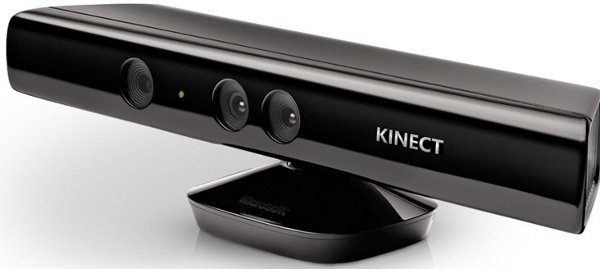Kinect for Windows confirmed at CES

Microsoft's last ever keynote speech at CES last night was definitely more of a whimper than a bang, with a bit of tubthumping for Windows 8 and its phone range, but not a lot of really new stuff to get excited about.
Except, perhaps, one thing. Kinect for Windows has been confirmed for an official launch on February 1st. It brings the firm's console flavoured motion and voice controller to the desktop proper, with a few tweaks to the original design to make it more desktop suited.
The main change to Kinect is the inclusion of a 'near mode', which allows it to focus on gestures as close as 50cm away - about the distance you sit from your screen when reading a certain games-related news site. The original array was a little long sighted when it came to recognising movements, designed as it was for use in the living room. Quite how precise Kinect will be at the range we haven't had chance to try out yet, but it needs to be pretty sensitive if it's going to make us put down the mouse.
Other changes include a shorter USB cable, but sadly not a smaller physical unit. That could be a problem – with Kinect the size that it is, there's not many desktops that will be able to make room for it.
The change no-one's going to like is the fact that Kinect for Windows is considerably more expensive than Kinect for Xbox – at $249 it's a bit of an indulgence, especially when there's not really much in the way of software to support it yet.
Microsoft argues that the console controller is, to some extent, subsidised by the games people buy off the back of owning it. That may be true, but with its enormous cash reserves waiting to win it back some favour, I think the company is missing a trick here: it's been widely rumoured that Apple will be releasing some sort of motion sensing software and cameras for a TV system later in the year that will probably make its way into MacBooks and iMacs too. Microsoft, on the other hand, has struggled to come up with many technology wins other than Kinect lately, and there's a lot of emphasis been placed on how well the system integrates with Windows 8 and embedded Windows set-ups. If it works, it could be spectacular with the Metro interface, but at $250 who's going to know it? A cheap and tiny Kinect which could be included with new systems almost by default would have won it a lot of much needed kudos I think.
And if you think Microsoft doesn't need the kudos a cheap Kinect could win it, just look at Windows Phone 7. By all accounts a brilliant operating system, but utterly ignored by a public who just don't think of Microsoft as exciting and innovative.
The biggest gaming news, reviews and hardware deals
Keep up to date with the most important stories and the best deals, as picked by the PC Gamer team.
Right now, there's not a huge focus on gaming for Kinect on the desktop – and with the price of Kinect starting off very high I'd be surprised if many developers spent a lot of time optimising for it just yet too.
I've written reams about what Kinect integration into Windows 8 might mean for Microsoft. Having just finished a round up of touchscreen PCs for another magazine, I don't think touch is ever going to work on the desktop, but motion might – and by pricing Kinect for Windows out of most people's range Microsoft may be in danger of letting someone else slip in and prove that a concept it has spent a long time developing and leading the way with can and does work if it's presented properly.
Tablet 2.0? I hope not. In the meantime, here's Kinect + LEGO.

